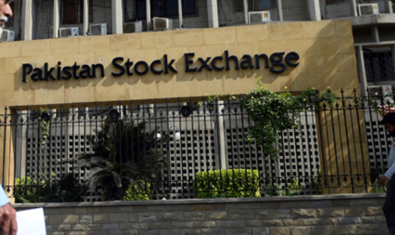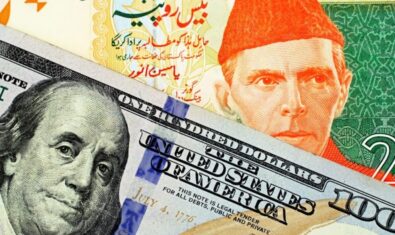The import of LNG has also helped reduce the overall electricity generation cost in the country by around Rs. 234 billion during FY17-20, according to a study by the State Bank of Pakistan (SBP).
During FY17-20, 72,755 Gigawatt hours (GWh) of electricity was generated in the country (excluding K-Electric) from LNG, at a total cost of Rs. 666.3 billion.
ALSO READ
Electricity Users to Get a Huge Relief in June
If the same quantity of electricity was generated using residual furnace oil (RFO), the total cost would have been Rs. 900 billion, SBP said while quoting data of the National Electric Power Regulatory Authority (NEPRA).
Estimates by the Ministry of Energy and OGRA suggest that Pakistan’s indigenous supplies would only fulfill 22.3 percent of the estimated demand by 2030.
If the long-delayed Iran-Pakistan (IP) and Turkmenistan, Afghanistan, Pakistan (TAPI) gas pipeline projects do not become operational, the average annual net gas shortfall during 2021-2030 is projected to be 2,593 mmcfd.
If TAPI and IP become operational, then the overall unmet demand would average 1,166 mmcfd during the same period.
Keeping these limitations in mind, it appears that the magnitude of future LNG requirements (if natural gas exploration levels and the pricing policy remain unchanged) would remain high over the short-to-medium term.
To put this deficit in context, it is 2.7 times the volume of LNG the country imported in 2020. Thus, it has become crucial to develop an efficient LNG market characterized by a robust regulatory and operational infrastructure to help run the domestic gas sector on a sustainable basis and strengthen Pakistan’s energy security.
Since the global LNG trade is relatively new compared to oil and is still evolving, the section initially takes stock of developments in the major markets and closely tracks the recent policy transitions in terms of nature of contracts, pricing benchmarks, and the role of governments.
Similar transitions are either underway or being contemplated in Pakistan’s LNG market as well.
There is also a perception among various stakeholders in the country about the cost of imported LNG, and there are frequent debates over the quality and duration of the long-term sovereign LNG contracts and the timeliness and benefits of spot procurement.
These dynamics make a strong case for greater involvement of the domestic private sector in LNG import and local sales, which is expected to introduce efficient practices in the LNG supply chain, as experienced by other countries in the region.
While the government has recently allowed the private sector to import LNG and has also issued licenses to interested parties, the remaining duration of the long-term sovereign contracts implies that the private sector would be operating in parallel with the public sector for some time.
However, it is important to understand that private participation alone will not solve the sector’s broad operational and financial problems.
Specifically, without addressing the fundamental issues associated with natural gas pricing, governance in distribution companies, and uncertainties at the end of the gas supply chain, the domestic LNG market, and the overall gas sector would continue to operate sub-optimally.
In particular, while addressing bottlenecks in the existing import, regasification, and pipeline infrastructure is necessary, it is equally important to expand the LNG user base in the country, especially to reduce the per-unit terminal capacity charges, which the private sector would also be paying for.
However, this expansion appears challenging, given the prevailing mindset of cheap/subsidized access to natural gas, which has seen users (especially industries) vying for a larger share in the indigenous natural gas pie instead of shifting to LNG.
Infrastructure for LNG
As in most other countries transitioning towards LNG, the associated trading and distribution infrastructure is still at a developing stage in Pakistan. The country started imports only in 2015 to bridge the rising demand-supply gap.
Encouragingly, in a short span of five years, the sector has established strong footings and a basic supply chain structure.
Subsidy rationalization is also important in the context of managing fiscal and quasi-fiscal costs of the government, especially when imported LNG is provided to already heavily subsidized sectors, such as households and fertilizer.
The situation could become more challenging for the gas distribution companies when their high revenue sectors (such as transport and power) start shifting their gas demand to the private sector.
In this context, political consensus and strong provincial coordination are needed to get a policy buy-in for the rationalization of subsidies. Finally, cross-sector linkages need to be carefully evaluated.
In particular, the robustness of demand projections that ultimately feed into timely procurement decisions crucially hinges on the adoption of more structured and regulatory-compliant practices in the power sector, which is consuming 60 percent of total LNG.
Presently, Pakistan has been importing LNG under a government-to-government LNG agreement (15-year contract with Qatar on a take-or-pay basis) and four agreements with private suppliers in Italy and Qatar (also term contracts on a take-or-pay basis).
During the last three years, more than 87 percent of the imported LNG in Pakistan came under these term agreements. The remaining 13 percent comprised spot purchases to cater to demand over the term contracts.
ALSO READ
SBP Business Confidence Survey Shows A Mixed Picture
According to OGRA’s estimates, the country needs the terminal send-out capacity to increase by around 150 percent by FY30 to handle the additional demand of 1,998 mmcfd of LNG; the planned capacity expansions are expected to plug this balance.
Currently, the government is the sole player in the LNG-importing business. This is in line with the global practice of heavy state presence during the initial stages of the LNG market development to build the basic infrastructure, implement policies governing the fuel mix, and generate local demand from industries, power, and transport sectors.

























